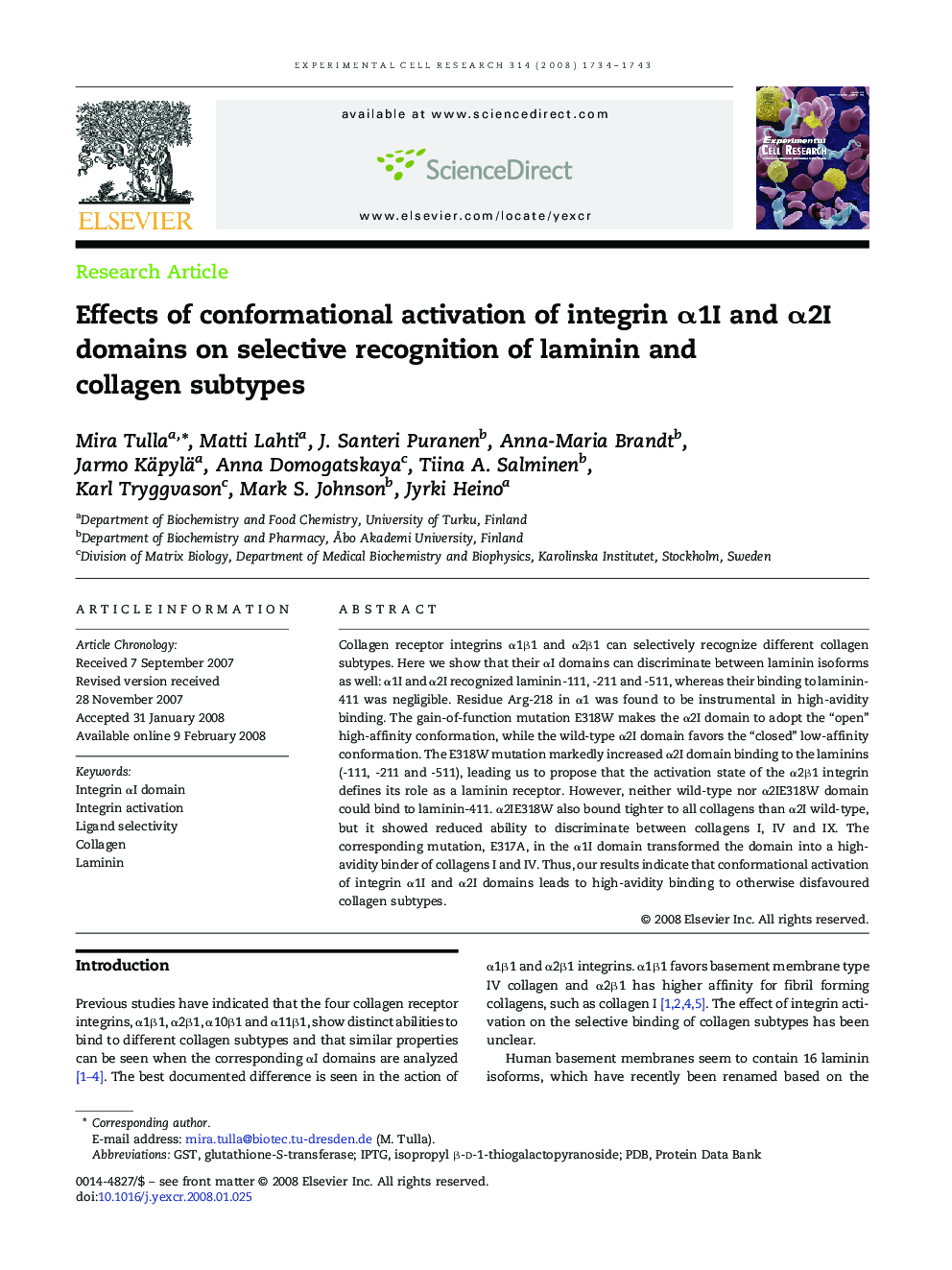| Article ID | Journal | Published Year | Pages | File Type |
|---|---|---|---|---|
| 2132212 | Experimental Cell Research | 2008 | 10 Pages |
Collagen receptor integrins α1β1 and α2β1 can selectively recognize different collagen subtypes. Here we show that their αI domains can discriminate between laminin isoforms as well: α1I and α2I recognized laminin-111, -211 and -511, whereas their binding to laminin-411 was negligible. Residue Arg-218 in α1 was found to be instrumental in high-avidity binding. The gain-of-function mutation E318W makes the α2I domain to adopt the “open” high-affinity conformation, while the wild-type α2I domain favors the “closed” low-affinity conformation. The E318W mutation markedly increased α2I domain binding to the laminins (-111, -211 and -511), leading us to propose that the activation state of the α2β1 integrin defines its role as a laminin receptor. However, neither wild-type nor α2IE318W domain could bind to laminin-411. α2IE318W also bound tighter to all collagens than α2I wild-type, but it showed reduced ability to discriminate between collagens I, IV and IX. The corresponding mutation, E317A, in the α1I domain transformed the domain into a high-avidity binder of collagens I and IV. Thus, our results indicate that conformational activation of integrin α1I and α2I domains leads to high-avidity binding to otherwise disfavoured collagen subtypes.
